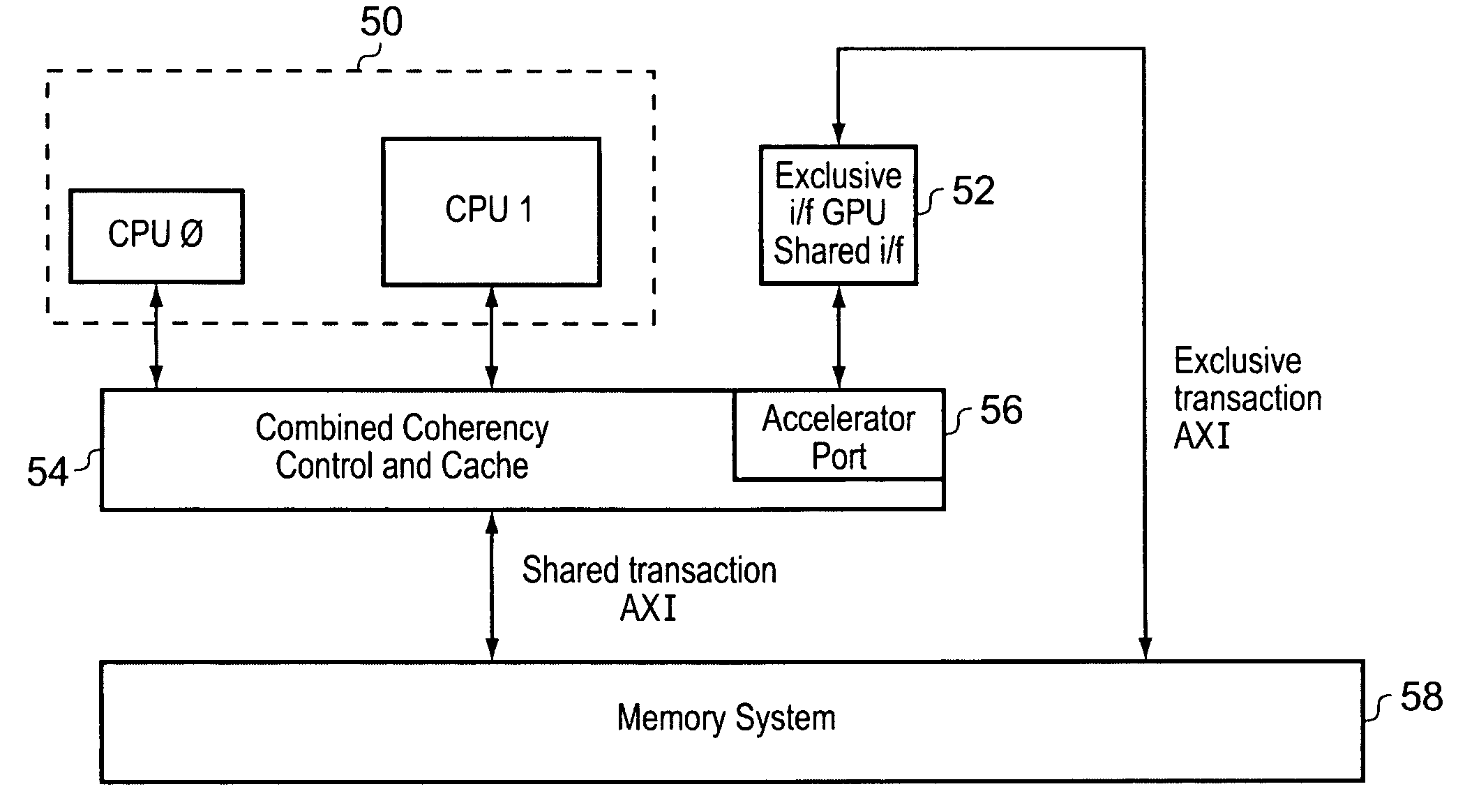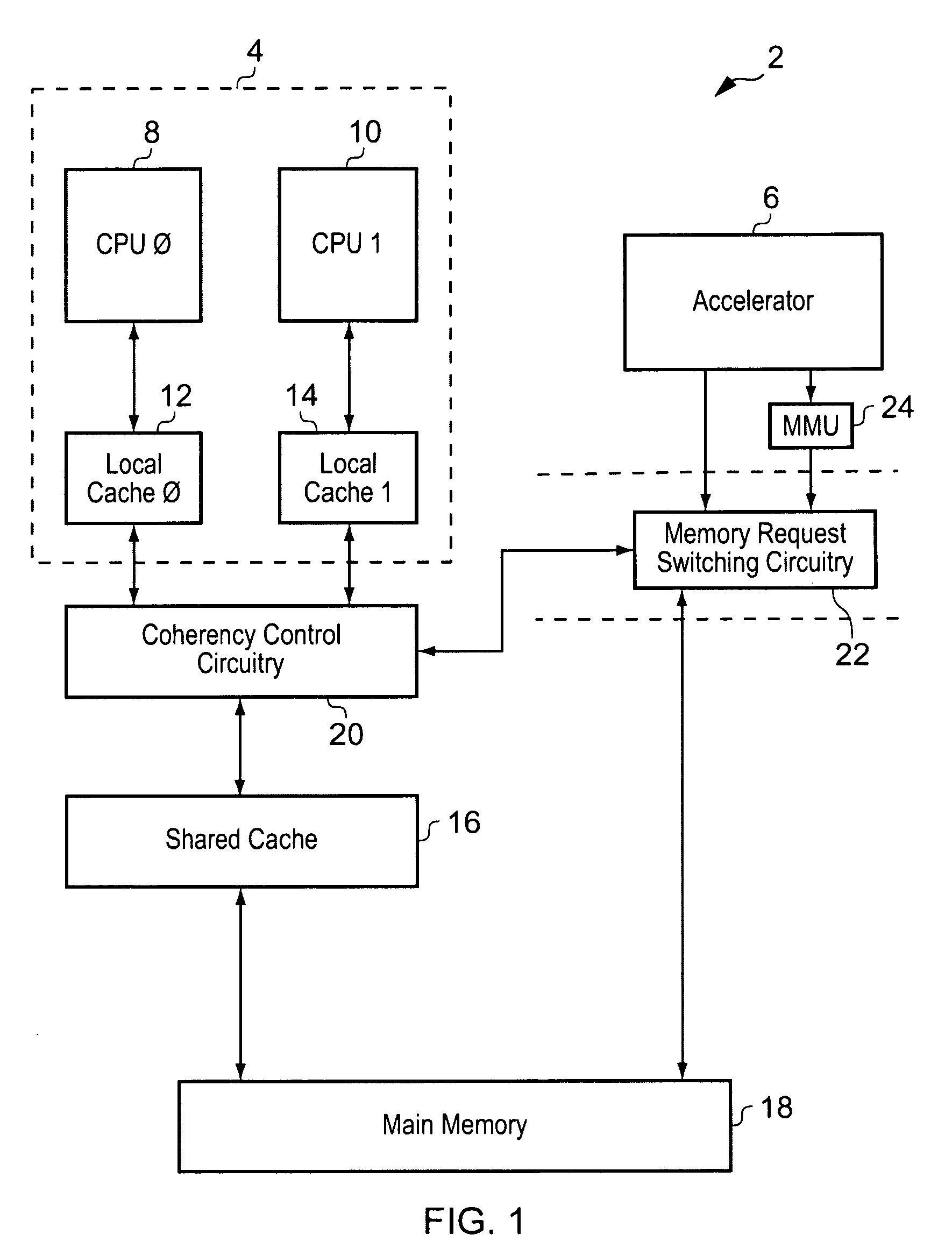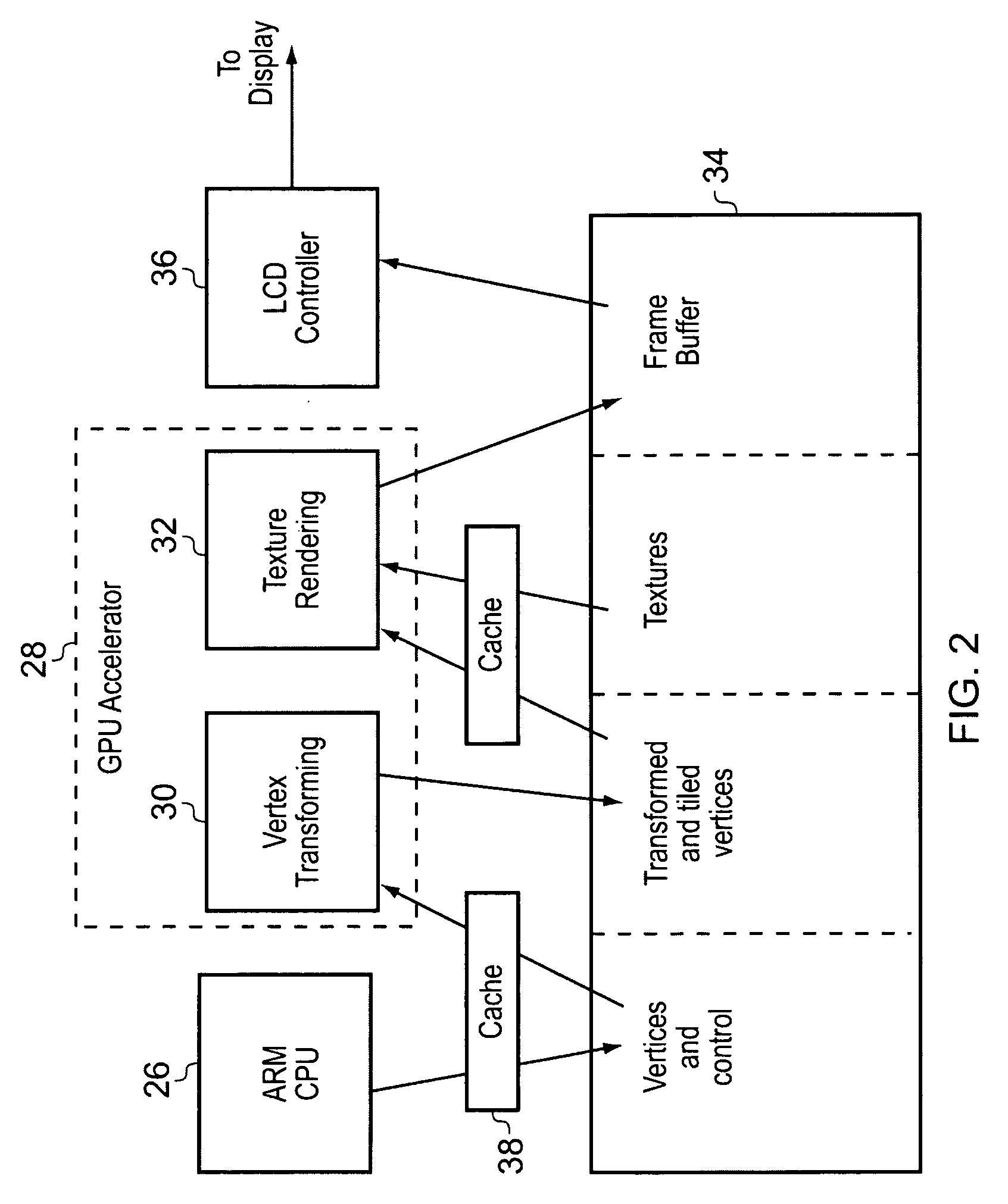Selective coherency control
a coherency control and selective technology, applied in the field of data processing systems, can solve the problems of complex coherency control mechanisms, significant resource overhead, and maintenance of coherence, and achieve the effect of reducing the load on the coherency control circuitry
- Summary
- Abstract
- Description
- Claims
- Application Information
AI Technical Summary
Benefits of technology
Problems solved by technology
Method used
Image
Examples
Embodiment Construction
[0051]FIG. 1 schematically illustrates a data processing apparatus 2 including a general purpose programmable processor 4 and an accelerator processor 6. The general purpose programmable processor 4 is a multi-core processor including a first processor core 8, a second processor core 10 and respective local cache memories 12, 14. The data processing apparatus 2 also includes a shared cache memory 16 and a further memory 18 in the form of a main memory. It will be appreciated that the further memory 18 may itself be hierarchical and contain one or more further cache memories.
[0052]Coherency control circuitry 20 is provided to manage coherency between the data stored at different locations with the system. The coherency control circuit 20 is coupled to the local cache memories 12, 14, the shared cache memory 16, the further memory 18 and via memory request switching circuitry 22 to the accelerator processor 6. The coherency control circuitry 20 serves to maintain coherence between dat...
PUM
 Login to View More
Login to View More Abstract
Description
Claims
Application Information
 Login to View More
Login to View More - R&D
- Intellectual Property
- Life Sciences
- Materials
- Tech Scout
- Unparalleled Data Quality
- Higher Quality Content
- 60% Fewer Hallucinations
Browse by: Latest US Patents, China's latest patents, Technical Efficacy Thesaurus, Application Domain, Technology Topic, Popular Technical Reports.
© 2025 PatSnap. All rights reserved.Legal|Privacy policy|Modern Slavery Act Transparency Statement|Sitemap|About US| Contact US: help@patsnap.com



